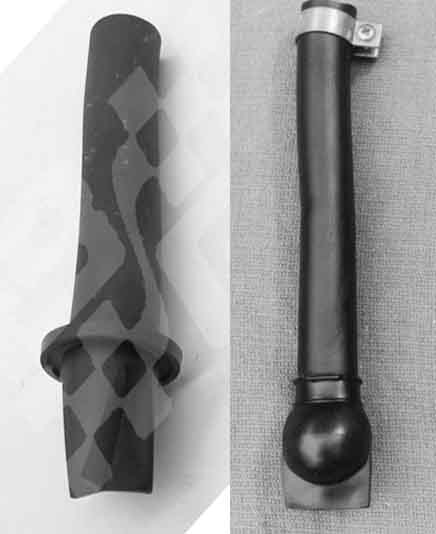Showing a rod inserted in the drain hole in relation to the grill apertures - 1973 model:
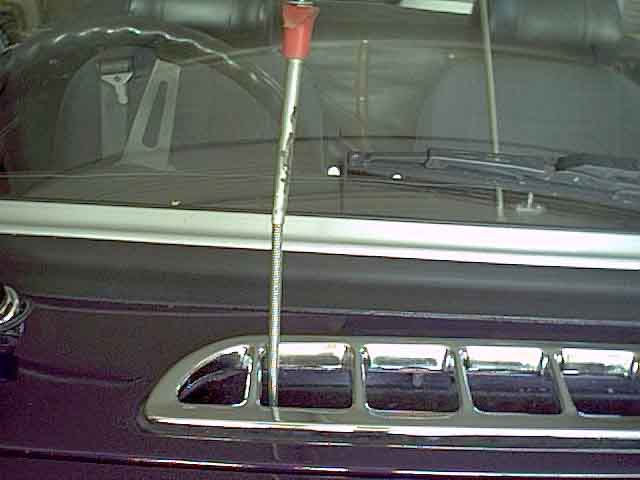
View from above. There is a plate between the fresh-air outlets and the bottom of the air-box, but that stops short of covering the drain hole:
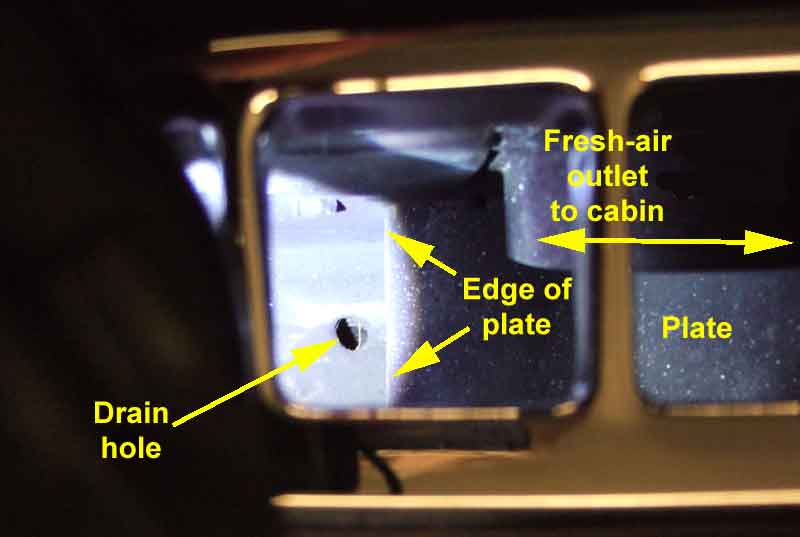
Earlier cars had a sort of 'leaf-trap' as seen here on The British Motor Museum Gaydon MGB cut-away. This restricts access to the drain hole somewhat ...
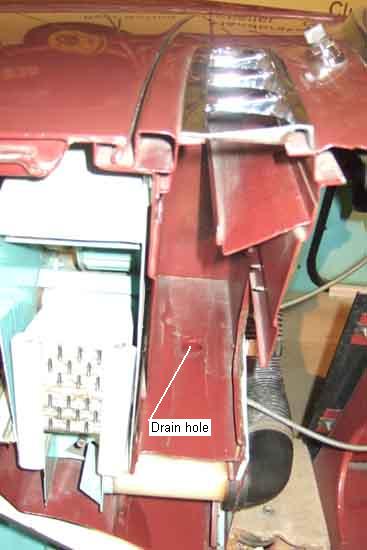
... but it's still just possible. There is an after-market mesh screen that goes under the grille to prevent debris entering in the first place, although since I've only had to do Bee's once in 26 years soon after purchase, and Vee's not at all, I haven't bothered. The grille has to be removed to fit it:
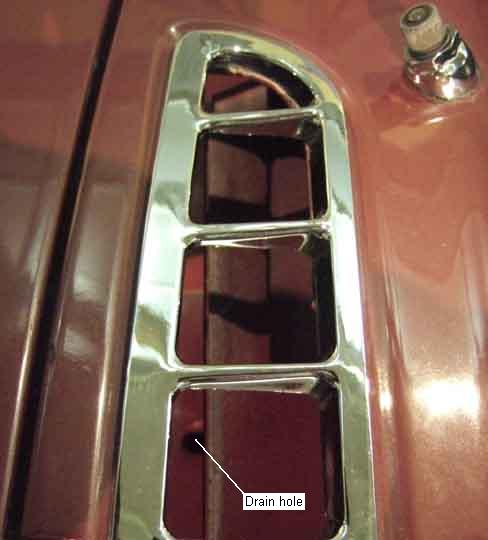
Showing the original spire clip (arrowed) pushed onto the peg of the grille to retain it. These can be tricky to remove except by levering the grille up, which makes them ping into the bottom of the box, although on Vee I was able to lever them down with a small screwdriver through the holes in the grille and capture them on a finger-tip. These have been replaced with plastic sockets which push into the holes from above, then the grille pegs push down into them. Similar sockets are used for badges on the boot lid. Much easier to deal with, but unfortunately it does need a bigger hole as it has to accommodate the socket plus the pin, a bit of a beggar on a freshly repainted body if you didn't open them out before painting. It does also mean that the grille can be removed relatively easily - good if you are doing it, not so much if a tea-leaf is doing it.:
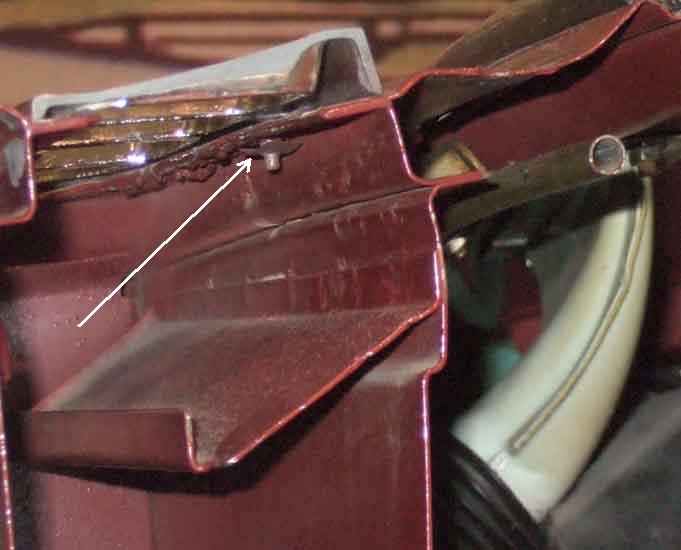
The British Motor Museum Gaydon MGB cut-away showing the metal spigot for the drain tube in the box-section over the gearbox, and the hole in the lower part the drain tube exits through. If the metal spigot rots away water will tend to lie in the box-section until deep enough to exit the tunnel hole, and eventually rot through to the cabin. If that happens probably the easiest solution is to drill a drain hole at the lowest point, although that will require engine and gearbox removal. It may be possible to repair the bottom of the air-box and the drain tube by removing the demister tubes and trim panels behind the console, that is the route for refitting a tube:
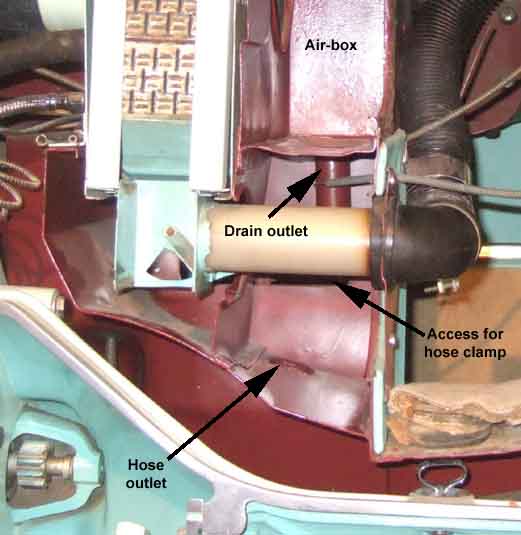
The clip attaching "Tom's Knob" (AHC321) to the drain tube at the bottom of the air-box, clearly visible on cars with the adjustable footwell vents (up to August 1970), as well as the air direction cable attached to the air flap (Dave O'Neil):
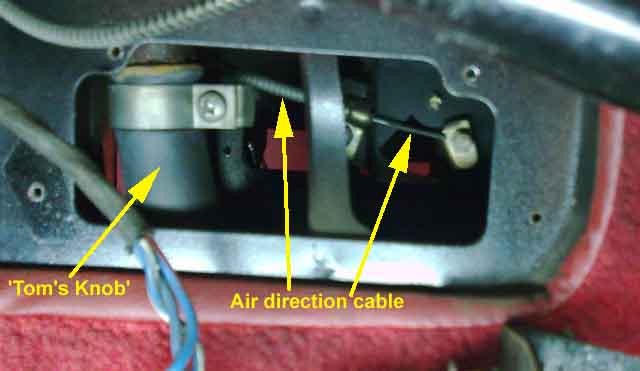
Showing the plastic blanking plug that gives access to the clip securing the drain hose to the bottom of the air-box on cars with the fixed footwell vents (August 1970-on). In either case you need to be very careful leaning on the Jubilee clip when loosening or tightening. If the bottom of the air-box has been weakened by corrosion you could push the metal tube over and have a much bigger job on your hands as the bottom of the airbox is pretty-well completely inaccessible from below. If water leaks from above the hose it lies in the box section between tunnel and air-box and from there gets into the cabin:

'Tom's knob' (arrowed) as seen from below, the hole just above the arrow is for the gearbox dipstick rubber bung (image 'borrowed' from www.vord.net):
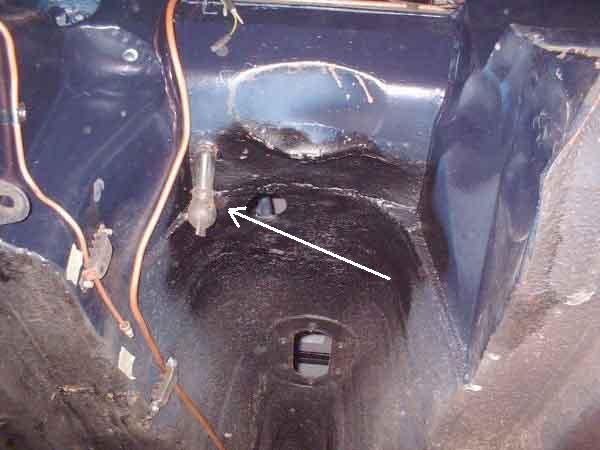
Vee's 'knob', the first clear view I've had now the engine is out. Obviously missing the restrictor at the bottom, and cut short, in fact it looks more like a standard piece of hose as the one above seems to be tapered:

Unavailable for many years, Brown and Gammons are showing a modified version available (left), albeit on 'stock alert' i.e. not currently available. Although as one person has said: "If I'd known how much trouble it would be to fit it, if I hadn't had to replace it I wouldn't have bothered!". The original hose is shown on the right, maybe explaining how it gained its colloquial name:
